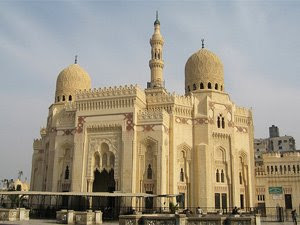 The Giza Pyramid complex is home to the world famous Giza Pyramids, the Sphinx and Chephren's valley temple.
The Giza Pyramid complex is home to the world famous Giza Pyramids, the Sphinx and Chephren's valley temple.Pyramid of Cheops: Once all the pyramids had smooth sides of polished stone, but the casing on the pyramid of Cheops has entirely gone and you see instead the underlying tiered courses of 2,500,000 limestone blocks.
Pyramid of Chephren: Chephren's Pyramid is almost as large as Cheops'. It has intact casing stones towards the top.
Pyramid of Mycerenius: At 66.5 M in height, this is the smallest of the three main pyramids. A 9th century caliph attempted to demolish the pyramids altogether, starting with that of Mycerenius. eight months and 170,000 blocks of stone later, he gave up, leaving a gouge you can see on the north face.
The Sphinx: A limestone outcrop was left standing in the quarry from which many of the blocks for Cheops were cut. His son Chephron had the idea of shaping it into a figure with a lions body and a god's face.
Valley Temple of Chephron: By the south flank of the Sphinx, Chephren's valley temple has been well preserved by its long burial under the sands. Majestically and simply assembled from pink Aswan granite, its square monolithic pillars support massive architraves.
Entrance Fees: (Please see at the bottom of this page)





























